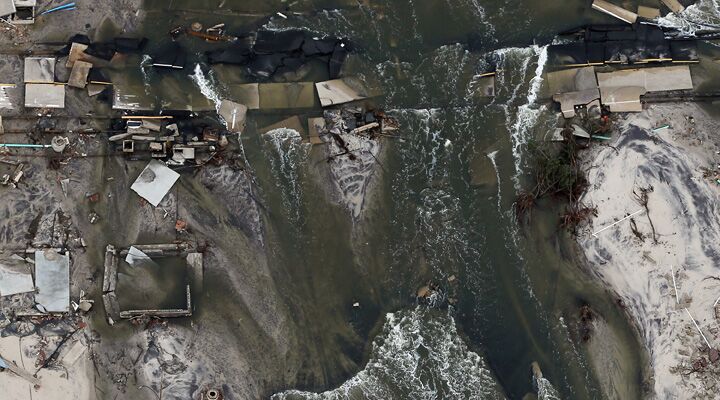
The Aftermath of a History-Making Storm
As Hurricane Sandy stormed ashore on Monday night, there were a lot of people crying out to God for protection. A lot of promises were probably made. But now that the storm has peaked and the clean-up has begun, how long will it take before everyone just gets back to everyday life?
I am guessing people will reach that point long before the damage gets close to being cleaned up. Some people might think that’s a harsh assessment. But it is a realistic reflection of society today.
Estimates for the damage caused by superstorm Sandy have hit $55 billion. Although not the most damaging storm in U.S. history, it is still one of the biggest. Damage from Hurricane Katrina came in at $96 billion. Over the next week, more accurate assessments will become available. But it’s clear that the damage in some areas is extremely extensive.
Forecasters expected a 11-foot storm surge, but in parts of New York and New Jersey, the storm surge hit more than 13 feet—dwarfing previous records. In some areas, whole coastal communities were wiped out. And damage due to flooding is widespread.
As of Wednesday evening, approximately 6 million New York and New Jersey residents were still without power. Utility companies are vague about when power will be restored.
In New York, the subway system is completely shut down. Experts report the system suffered the worst damage in its 100-plus-year history. Floodwaters still fill tunnels and power stations, damaging the electrical wiring. The cost of the repairs could be astronomical. Officials hope partial service will be restored on Thursday. New York’s LaGuardia Airport still had water on its runways as of Wednesday and is closed. The Brooklyn-Battery Tunnel, which connects Brooklyn to Manhattan, and the Holland Tunnel, which runs between New York and New Jersey, remain closed.
Wastewater continues to escape from a sewage treatment plant on Long Island. Sewage also continues to back up in people’s homes. Seawater in flooded communities is becoming a toxic mess.
New York City schools remain closed until the end of the week. The Bellevue Hospital remains evacuated.
In New Jersey, much of the coast is devastated. Reports indicate the storm literally reshaped New Jersey’s barrier islands.
In Hoboken, approximately 20,000 people remain stranded. About 25 percent of the city remains underwater. Some residents are angry at the slow response of state officials to get food and other aid to stranded people. There are reports of price gouging at local stores that still have food to sell. Officials say they are doing the best they can, and that people had strong and ample warning to evacuate. The mayor of the city appealed to people to bring boats to City Hall to help with the evacuation.
In Brick Township, fires still burn.
In Atlantic City, the floodwaters that covered most of the city are now receding. The city’s dying casino industry now faces another setback as it waits to learn how extensive the damage to city infrastructure is.
On Wednesday, the Navy ordered three helicopter carrier ships to the New Jersey and New York coasts to help with recovery operations.
Parts of West Virginia got three feet of snow during the storm and are now digging out.
Near Chicago, commerce on the Great Lakes is reviving. Transport came to a standstill as even massive ships—some as large as three football fields—sought shelter from the storm. Waves more than two stories high were just too much of a risk.
Residents on America’s Eastern Seaboard will not soon forget superstorm Sandy. But more importantly, what will people learn from the storm? Gerald Flurry explains what this almost universally ignored lesson is. Watch “Sandy’s Destruction: What Nobody Is Talking About.”
